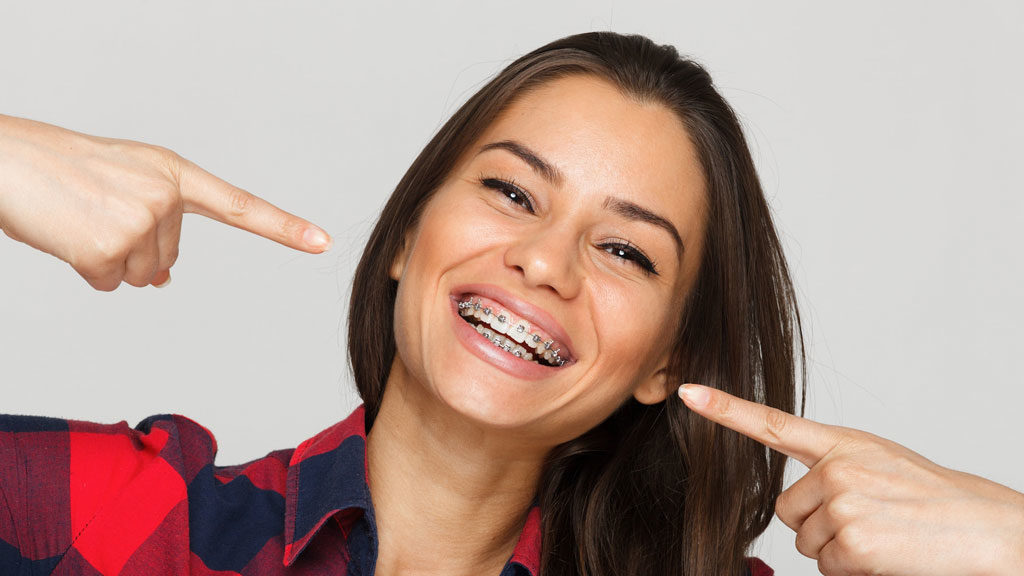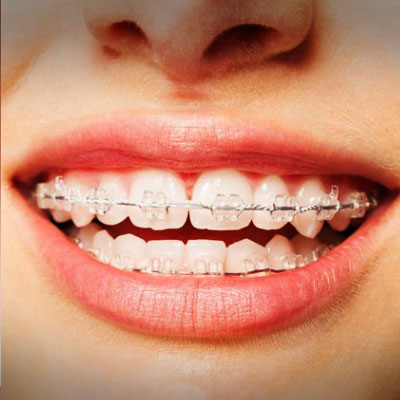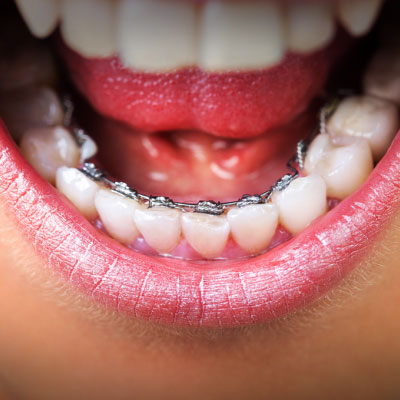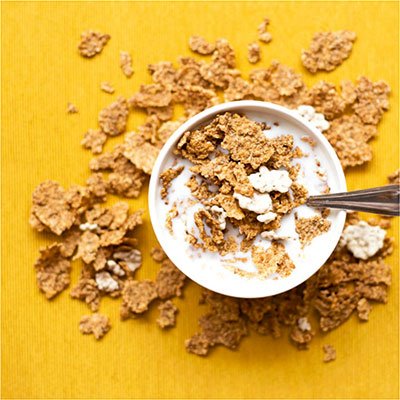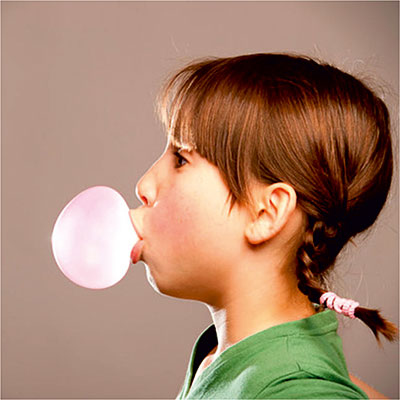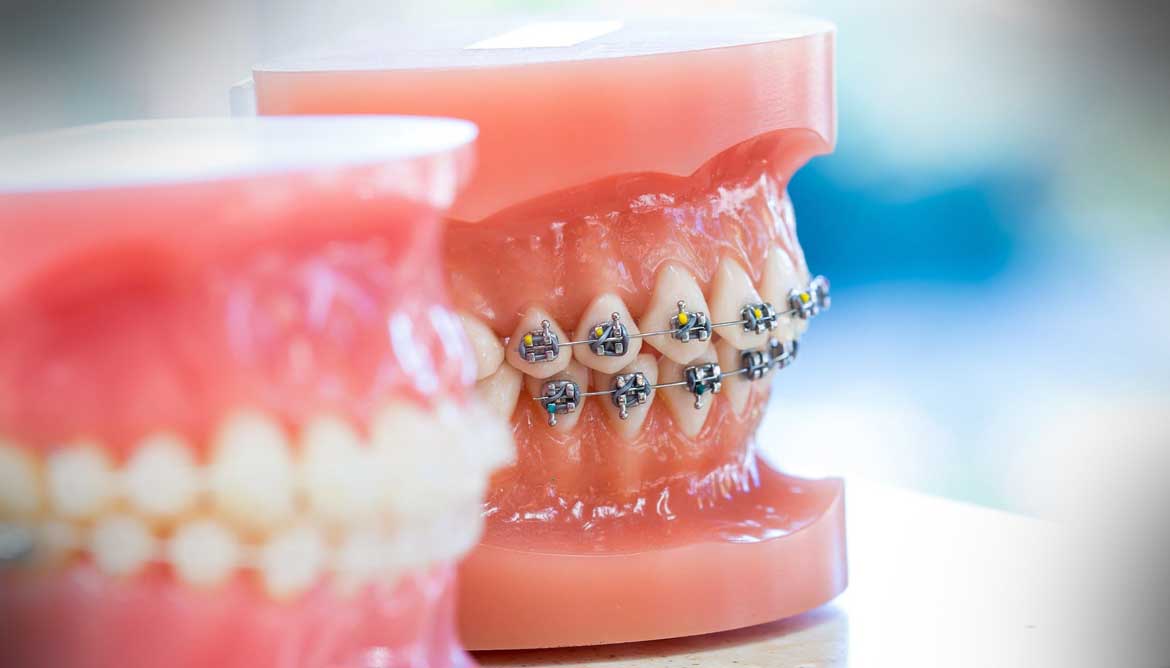THE ULTIMATE GUIDE TO DENTAL BRACES (PART-2)
ABOUT DR. KALYANI TRIVEDI

25+ YEARS OF
RICH EXPERIENCE
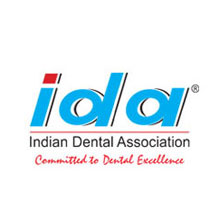
PRESIDENT OF IDA,
AHMEDABAD
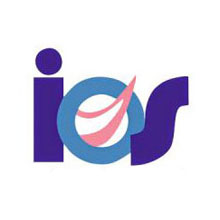
HON. TREASURER OF
INDIAN ORTHODONTIC SOCIETY

DR. KALYANI TRIVEDI
ALL ABOUT BRACES
In this second part you will gain insight about braces for kids and adults as well as their duration, process and working.
Mentioned down below is advantages of braces followed by the cleaning method for teeth while wearing them.
We have also listed different types of retainers available and the purpose behind wearing them after the braces.
Learn more about whitening your teeth after the braces process, teeth removal for braces and the cost involved.
BRACES FOR KIDS

The requirement of braces in children can be due to a number of reasons including, crooked teeth, crowding, overlapping teeth or bad bite, i.e. a case in which one of the jaws is bigger than the other. Often these problems might occur because of baby teeth lost soon, any accidents or injury or sometimes because of thumb sucking habits also. It is also reported that orthodontic problems are inherited and hence if someone in your family had braces, it is most probable that their kids will too.
It is recommended that a child should visit the dentist regularly from the age when permanent teeth start to arrive. In that case, the dentist can figure out any problems like crowding or irregular teeth and can start the treatment accordingly. It also gives the dentists ample time to treat. In addition, the jaw bones and teeth are also soft and under construction and hence it is easier to form them accordingly.
Generally most of the orthodontic problems of a kid can be solved by traditional braces, which are now available in many colours and shades making them attractive to the young ones. However, under some cases, a special functional appliance known as headgear might be administered to apply extra force on the back teeth. Dentist may also propose going for a teeth extraction in case there is no space to align the teeth.
Once the braces are fixed, the child should regularly visit the dentist to monitor the changes and for any other issues which they may feel. They will have to wear the braces for around a couple of years depending upon the severity of the case. After the braces, they might wear Retainers which help to keep the newly moved teth in place.
Caring for Braces in kids is also a tedious but very important task. Teeth should be brushed regularly after every meal and special kinds of brushes and flosses should be used. Regularly visit the dentist for any checkup regarding plaque formation and cavities. In case of pain or broken braces, an over the top pain reliever can be taken and specialized waxes can be applied over the braces and wires to get relieved form the sharp edges. However, if the problem persists, visit an orthodontist immediately.
BRACES FOR ADULTS
It might be surprising for some, but the truth is you are never too old to get braces. If you never had an orthodontic treatment in childhood and you are facing problems like headache, tooth ache, gum diseases, crooked smile or jaw and ear pain, it might be the time to visit an orthodontist.
An adult goes through the same things as the kids using a braces but the time taken to achieve the results is slightly longer and there are some other things which should be kept in mind:
- The bones are done growing in adults and hence some of the changes may not be possible without a surgery.
- The entire process may take longer for you than for a child or adolescent, however it also varies from one person to another.
- Before going with an orthodontic treatment do consult with a regular dentist and a periodontist so that there is no complications due to bone remodeling or bone loss.
- Braces can affect pregnancy in females.
- Any other underlying health issues shall also be discussed and kept care of.
- Regardless of age, retainers must be worn after the treatment and in adults they could be recommended to be worn for their entire lives.
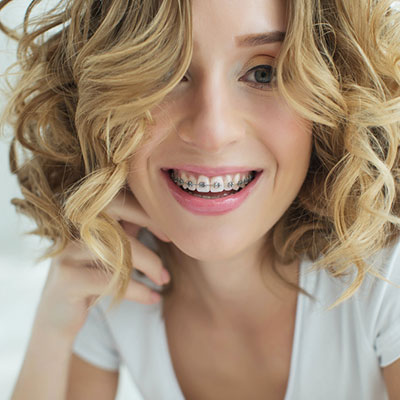
BRACES DURATION
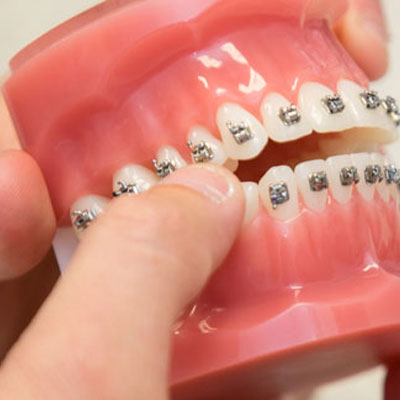
Orthodontic treatments are not one-size-fits-all treatment, they are different in each and every case as the mouth of each patient is different. Appropriating the time taken for the braces to treat an anomaly will depend upon a number of factors exclusive to that particular patient. Generally once the braces are put on, it requires anywhere between one to three years to take them off. After that also, there will be retainers which are generally worn for many years. However, one can always shorten that time by following the dentist’s advices and by opting for some accelerated procedures available in the market.
The time required for braces varies as per the following situations:
- Type of treatment – Conventional Braces will take lesser time as compared to lingual or Invisalign braces.
- Age – Young patients tend to achieve the results faster as their bones and teeth are still growing, soft and respond well to changes.
- Severity of the case – Mild misalignment will always take less time as compared to overcrowding or under-bite and over-bite issues.
- Patient Compliance – It also depends on how well does the patient takes care of the treatment including oral cleanliness, food habits, wearing of braces / retainers.
BRACES PROCESS
Braces are not just stuck on your teeth and wires drawn through, a thorough pre checkup is generally done in the first visit, which is necessary to plan the working of braces. In that first visit, the orthodontist will thoroughly examine the teeth, mouth, and jaw. He or she may also look for any problems in the jaw during chewing or swallowing or is there any clicking or popping of the jaw near the ear.
The dentist will take X-rays of the mouth to better understand the current laying positions of the teeth and are there any other teeth which might be stuck in the gums or are they coming out. He might also take a mold of your teeth and make a cast. Then he will decide on how to make your braces so that each tooth receives the required pressure and can be moved into its appropriate place.
Installation of braces is not a painful process, thanks to the immense technological advancement in the medical industry. However, in the following days, during the daily activities, it might feel uncomfortable. You may feel a dull throbbing or soreness for which you can take normal pain relievers.

BRACES WORKING
Speaking in simpler terms, Braces work by applying a constant pressure on our teeth and thus moving them ever so gradually in the required position. The pressure or force is applied through archwire attached to the bracket which transfers the force to the teeth. Other than this general setup of braces, sometimes rubber bands or spacers or springs are added to gain more force on the particularly stubborn teeth.
Before getting on to the working, lets us get acquainted with the parts of braces and what role they play in getting us that perfect set of teeth.
BRACKETS

These are the metal pieces which are stuck on your teeth to attach a wire to them and thus make it possible for pressure to be applied evenly. Depending upon the type of braces you choose, brackets are made up of ceramics, plastics or metal like stainless steel. They are applied to the teeth using glue.
ARCHWIRES
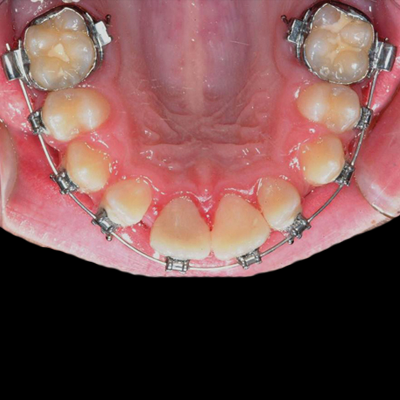
It is the wire which goes through the brackets and joins each and every tooth in a chain which in turn applies the pressure on individual tooth. Archwires are available in a range of material from stainless steel to alloys of titanium with copper or nickel.
BANDS
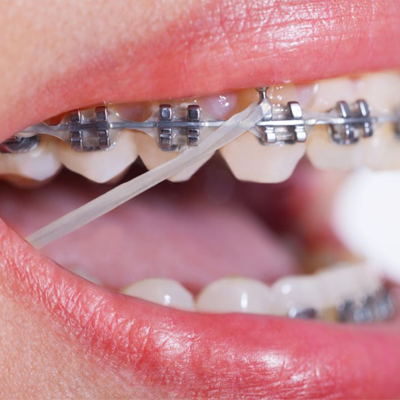
Generally used in most of the braces treatments, they are the colourful pieces of rubber which are joined to the brackets to apply additional forces on the jaw. They are sometimes also known as O-rings or ligatures.
SPACERS
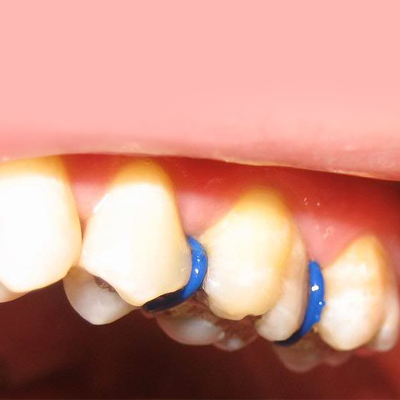
Spacers are made of rubber bands or metal rings and are used to make space at the back of the mouth and pushing the jaw forward in case of a severe deformity of jaws.
BUCCAL TUBE
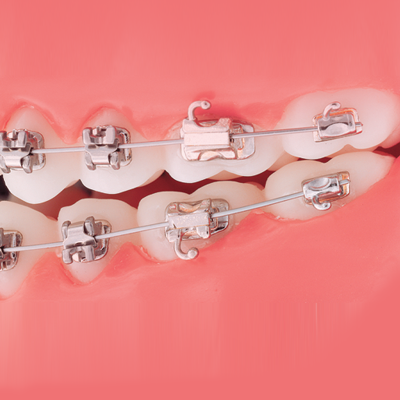
These metal tubes are attached to the molar teeth at the back of the jaw. They anchor the other parts of the braces together and help tighten and release different parts of the braces.
SPRINGS
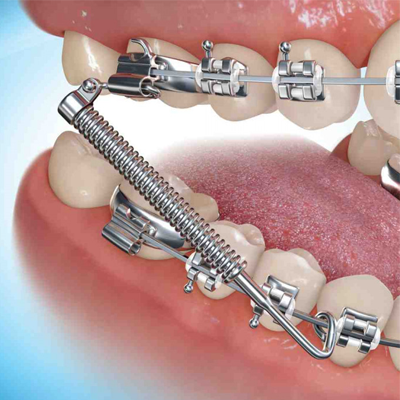
Sometimes, to make spaces between two adjacent teeth or to apply pressure a coil spring is added on the archwire.
Working of wire
The orthodontist attaches the brackets to your teeth based on his pre-checkup cast and then inserts the wire through them, forming a metal chain. Important part here is the strategic placement of brackets on your teeth, and the tying of those brackets to the archwire.
In initial stages a narrow and flexible wire will be used to join the brackets. This will help your teeth to get acquainted with the new force and pressure and they will acclimatize to it and start moving in the required direction. As the teeth start to become straighter, thicker archwire is used to assert higher pressure on the teeth and align them in their proper position. Once they get close to their final position, the orthodontist makes calculated bends in the wire.
These bends are generally given to apply varying force on different teeth so as to move them in a certain same level. This may make the wire uneven across the teeth. Due to the bend, when the wire is flexed into the bracket, it wants to regain its normal shape due to which it provides the necessary force for teeth movement to begin. Twisted or turned tooth are corrected by applying bending forces only.
Bone Remodelling
Now we’ve seen how the braces work and how they apply pressure and force to align our teeth perfectly. But how do our teeth, which are one of the hardest part of our body, move? That is made possible because of a membrane which is present beneath the gums and joins our teeth to the jaw. This membrane is the one which controls the movement of the teeth when the pressure is applied.
The primary cause for this remodeling is the archwire itself, however there is a lot more going on than just a simple wire putting on pressure. When pressure is put on the tooth, two kinds of bone forming cells, known as osteoblasts and osteoclasts form around the tooth’s root. These cells create a push and a pull motion pressure on opposite sides of the tooth with the help of Archwire and thus helping the teeth “move”.
For example if a tooth is to be brought forward, the cells on the back of the tooth will push it and cells in the front will pull it. On the side with the negative pressure, the cells eat up the existing bone and on the side with positive pressure, a new bone is formed by the cells. The tooth slowly moves into the correct position as pressure is put on the tooth and the bone of the tooth and the jaw remodel themselves for the alignment.
ADVANTAGES OF BRACES
The braces being used today are much smaller, comfortable and less obtrusive than those of the past. They use fewer brackets, wires are less noticeable and are more effective and efficient. Braces solve a variety of problems and come in various forms each having their own advantages.
The conventional metallic braces are economical, efficient and treat most severe of the problems. Ceramic braces are similarly effective and are drastically less noticeable. Linguistic braces are virtually invisible and can help you smile at your best even with braces. Invisalign are easy to use, removable and helps maintain optimal cleaning of the teeth during treatment.
You can learn more about different types of braces, age limit, foods to eat & avoid over here.
Other than these, Braces help solve more health issues like:
- Straightening of teeth – helps the patient with dental problems as well as raises a confident smile.
- Proper Alignment of teeth that are crooked.
- Bringing the teeth closer and reducing the gap.
- Spacing between crowding teeth.
- Prevents chipping and overly worn teeth due to uneven jaws or over-bite and under-bite.
- Prevents gum diseases by spacing the teeth properly and making space available for flossing and cleaning.
- Prevents jaw-weakness and muscle pain resulting from misaligned teeth.
Having straight teeth and a properly aligned jaw can impact not only your appearance but your overall health. They are making your mouth easier to clean and care by spacing your teeth and correcting your bite. In the end, braces help us to live better and smile better.
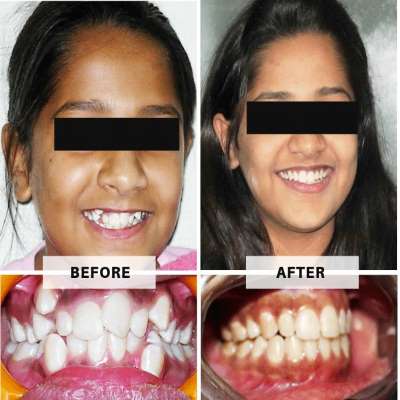
CLEANING TEETH WITH BRACES
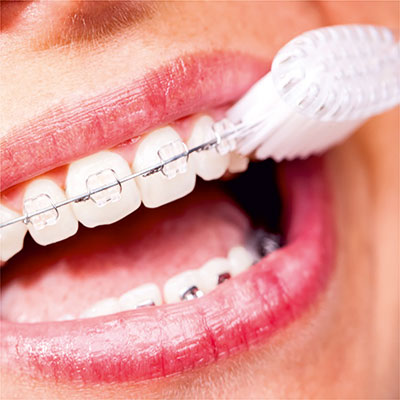
One of the most important aspects after getting braces is how do you clean them? With a mesh of metal wires and brackets running around cramped spaces in your mouth, cleaning becomes increasingly difficult. However, bringing inn some constructive habits in your regular schedule will help you maintain the required Oral health.
Regularly brushing the teeth after meals will keep food from becoming stuck in the brackets or between the wires.Orthodontist may also recommend special floss which helps flossing between the teeth and wire and around the braces. Some special devices such as a Waterpikflosser and interdental toothbrush can be used to navigate around areas that are hard to clean like archwires and beneath brackets.
It is recommended that after wearing braces you should visit your dentist regularly within 6 months for thorough cleaning of your teeth and mouth.
Dentists round the world have also devised steps to follow while brushing your teeth regularly. It will help remove the plaque and germs from all around your mouth while keeping your gums and teeth healthy and braces pain-free.
- Before brushing, rinse off your mouth with water so as to loosen any stuck food particles.
- You should remove all the removable components from the braces like elastics and bands.
- The wires and pins of the braces should be cleaned by keeping the brush at a 45-degree angle and moving around them.Brushing must be done starting from top side of the wire to its down side. Take your time and ensure you cover each part of the braces.
- Brush your each tooth individually by moving your brush in circular motion at a 45-degree angle from gum line for 10 seconds with gentle pressure.
- Braces may make your teeth sensitive, so use a specially formulated fluoride toothpaste which decreases sensitivity.
- Make sure to brush your tongue and the roof of your mouth as well.
- Floss every time you brush your teeth because the debris and particles stuck in between tooth will not be removed by brushing only.
- Use approximately 18 inches of floss, wrapped around your fingers.
- Gently feed the floss between the top of your tooth near the gum and the main arch wire of your bracket.
- Use a gentle sawing motion on the side of each tooth.
- Rinse your mouth with mouthwash after you’ve brushed and flossed.

RETAINER AFTER BRACES
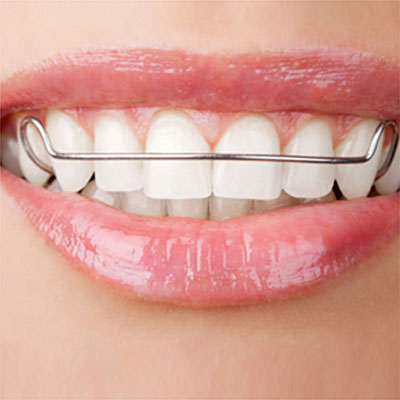
Although the realignment has been done and your teeth are now as good as it gets, it is really necessary to care for them and keep them in their newly arrived place. If not they will not be adjusted to this movement and will move back to the original position, which is known as a Relapse.
That’s where a Retainer comes in. Retainers are kind of trays just like mouth pieces which are worn on the teeth to keep them from moving back in their original position. They can be sometimes fixed or removable depending upon the treatment and time.
After removing the braces it is likely for the teeth to get to old position as they are not feeling any force. To prevent them from doing so, Retainers are fixed or recommended and the patient wears them for several hours a day for the first six months and then only at night for years hence. It is a life-long commitment and the longer you wear your retainers the better are your chances of teeth staying healthy and perfect.
Although you can go without wearing any retainers for a day or few but consistently doing this will relapse your teeth. Retainers are very important as long as you want to your teeth to look the way they are after braces. Any carelessness in wearing the retainers may also start a braces treatment again.
TYPES OF RETAINERS
Currently as with the braces, several retention options are available in the market. We will discuss them below:
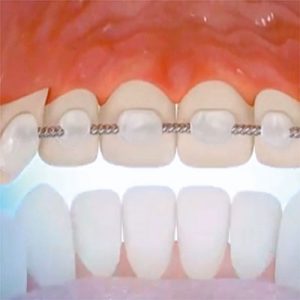
FIXED RETAINER
A thin wire fixed to the back of your front teeth, from canine to canine tooth.The huge advantage is it’s fixed in place and hence there will be no movement of teeth. However, it is only useful for 6 upper front teeth and the rest are still free to move.
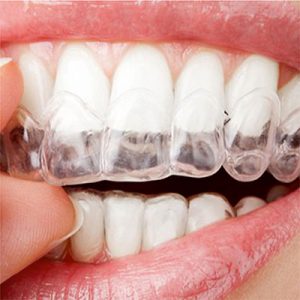
CLEAR RETAINER
Also called ‘Essix’ retainers, they are similar to the Invisalign trays as they are a cast which is produced based on your teeth mold. They are worn day and night for at least 3 months after the treatment.Their advantage is that they are removable and are easy to clean and use. They also provide coverage of all teeth. However, if not complied properly, teeth may get back to relapse.
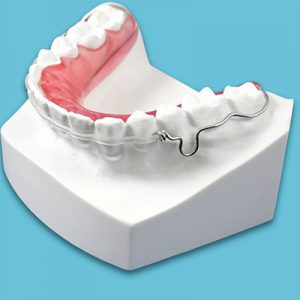
HAWLEY RETAINER
They are removable retainers and are made up of a roof plate, clips for the back of the teeth and a wire for the front. It is firm, durable and also adjustable. But the plastic plate on the roof of the mouth is difficult to live with and the wire up front is not aesthetically pleasing.

COMBINATION RETAINERS
The best of both worlds, the fixed ones are bonded permanently and the clear ones are worn only at night. Giving you ease of use, pleasing looks and low risk of relapse.
HOW TO WHITEN TEETH AFTER BRACES

Braces wearing is no small thing. It costs time, money, our favourite foods, comfort and looks, confidence and what not. Even after the availability of variety of matching braces and coloured ones, teeth are not that attractive. And with all this comes instilling fear of teeth getting stained and the covered parts coming out different shades when the braces are removed.
It sometimes become really necessary to use teeth whitening products because with metals and wires attached for so long, cleaning is sometimes improper and some coloured food material like coffee, wine and turmeric tend to colourise our teeth from open areas. How can we do that during the treatment? If we opt for an after treatment remedy is it still workable? Questions like these are answered as follows:
If you had worn lingual braces or removable braces, whitening products will work much as they do for people without braces. However while or after applying whitening products you should not consider wearing any removable or invisible appliances since it can cause sensitivity or burning irritation.
With the conventional braces it is not at all suitable to use whitening products. Since in those, a part of teeth is covered with glue and bracket, the whitening product will not be effective on full teeth surface. However, there are some products available which keep the uncovered part of the teeth unstained and then can be useful for whitening once the braces are removed. Salt rinsing, baking soda brushing are some of the examples.
Using good fluoride toothpastes and mouthwashes along with a regular brushing and flossing schedule will also help in keeping the tooth in up-to date condition.
TEETH REMOVAL FOR BRACES
Orthodontia: the field of work of an orthodontist, is the art of straightening and aligning the teeth. If the dentist notices that there is a problem or less space available for the manipulation, a tooth removal may be necessary.
In adults, the bone and teeth are formed very well and they cannot be moved to create space. The only ways are surgery or a tooth removal, the latter of which is feasible and easier. In addition, if the adult patient is getting braces for protrusion of front teeth, many a times it is a case that there are teeth at the back which do not allow the frontal teeth to go back. In that case, tooth removal is the only way out.
In children, the palates bone is still malleable and can be widened using extenders so as to make a space. However, even in children tooth extraction is sometimes necessary owing to other issues. When the child’s jaw development hasn’t met the speed of the tooth maturation, crowding occurs. Teeth twist into unusual positions so that they can accommodate all of the erupting teeth around them. Extractions are necessary in such cases. Apart from it when there is an impacted tooth, i.e. it is a permanent tooth that wants to come out but can’t because of presence of lower teeth, it is generally extracted and then aligned properly.
COST OF BRACES
Generally the cost of braces, like any other medical technology, depends upon the area of service. In cities it would be costlier, rural areas will be comparatively cheaper. Also, it is at the sole discretion of the dentists. Orthodontic procedures are seldom covered under Insurance hence it is better to check the insurance before you opt for the service. However they sometimes do partially cover children under age 18. But will cover only if you start the procedure after the cool-down period of the insurance. In India, currently the average prices of the braces treatment are somewhere in the following range:
Metal/Conventional Braces
Ceramic Braces
Lingual Braces
Invisalign
– ₹ 18,000 – ₹ 35,000
– ₹ 30,000 – ₹ 55,000
– ₹ 72,000 – ₹ 1,90,000
– ₹ 60,000 and above
The above mentioned figures only cover the basic cost. The cost of the products used, visiting charges of dentist, medical expenses might be charged extra.
Testimonials
We at Vyom Orthodontics & Dental Care welcome feedback and are always looking to provide best of the service by creating great friendly atmosphere and usage of the modern innovative orthodental treatments.
Find out what our patients are saying.
- (+91) 079-26672458 / 0720
- kalyanimtrivedi@gmail.com
- www.vyomdentalcare.com
- Dr. Kalyani Trivedi
Vyom Orthodontics & Dental Care
7/B-1, Vivekanand Society,
Mahalaxmi Panch Rasta
Paldi
Ahmedabad – 380007




